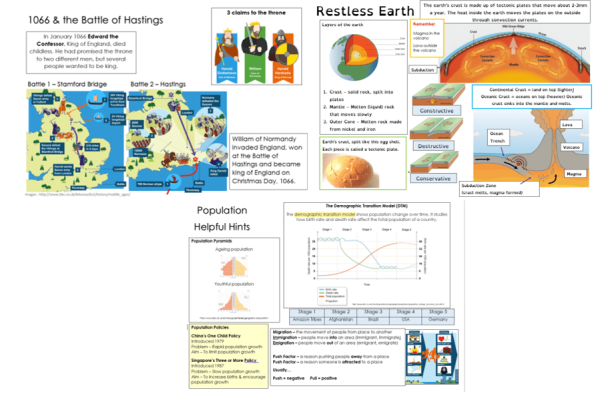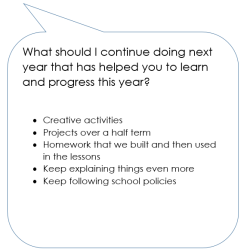
Now I’m no expert in SEN or SpLD for that matter, but these are 5 strategies that I have found that work for my students over the past 5 years. These strategies have come from research or CPD I have undertaken.
1 // Pastel Colours for Powerpoints
Since I can remember I’ve been using pastel colours for PowerPoints and other digital documents. I read somewhere during my NQT year that pastel colours are preferable for students with dyslexia but are also beneficial for all students as white backgrounds can cause eye strain. Ever since then I’ve been using pastel colours for displaying information on the whiteboard. Yellow for task instructions, blue for information and green for assessment for learning. In addition the background is a light grey to reduce glare and sensitivity to bright lights.
Further reading on role and value of colour
2 // Structure Scaffolds
To support students to develop their extended writing I’ve used a variety of scaffolding strategies over the years in order to enable students to break down the task and focus on demonstrating their knowledge as opposed to structure (initially). Some approaches include sentence_starters_mat, structure sheets/strips and tasks broken down into sections which come together as one piece in the end.



3 // Note Taking Supports
Students with dyslexia regularly struggle to take notes, the challenge of listening and writing at the same time is clear. In order to develop note taking skills, I’ve provided what many people these days call ‘Knowledge Organisers’ as a reference point and note taking supports to support laying out and recording information.


4 // Differentiated feedback
This really applies to all students, however there are things I focus more or less on with students with SpLD than others. For instance focusing on subject knowledge as opposed to spelling, punctuation and grammar, making students respond to questions as opposed to making improvements to a previous piece of work and editing as opposed to full re-writes.
5 // Words to use in a lesson
Really simple but effective way to develop subject specific terminology in SpLD students and their practice of spelling such terms has been the list of key terms to use during lessons. These appear as a list at the bottom of PowerPoint slides and students are given the key word list at the start of the topic. They’ve then been able to highlight the words for the lesson that they need to focus on using. These are the only spellings I have focused my attention on in the marking of their work and these are the only spellings I have had them correct. I found this worked particularly well with boys, particularly one higher ability boy in year 8 that particularly worried about the structure of his written work and SpAG, he’d focus too much on these rather than showing his understanding in written work. When we started to focus on the spelling of key terminology instead he wrote more about what he knew and understood.

I hope this post is of some use to you.
Share your approaches in the comments.
This post is featured by Twinkl
in their ‘Teaching Writing Blog’ https://www.twinkl.co.uk/blog/teaching-writing’







 Through the course of the last academic year one of my aims was to develop more independence in my learners.
Through the course of the last academic year one of my aims was to develop more independence in my learners.








 Since Christmas one of the things I’ve been focusing on along side independent learning is encouraging more reading aloud in lessons. It’s something I’ve done every now and then in the past and has included reading textbooks, resources and student’s work.
Since Christmas one of the things I’ve been focusing on along side independent learning is encouraging more reading aloud in lessons. It’s something I’ve done every now and then in the past and has included reading textbooks, resources and student’s work.




